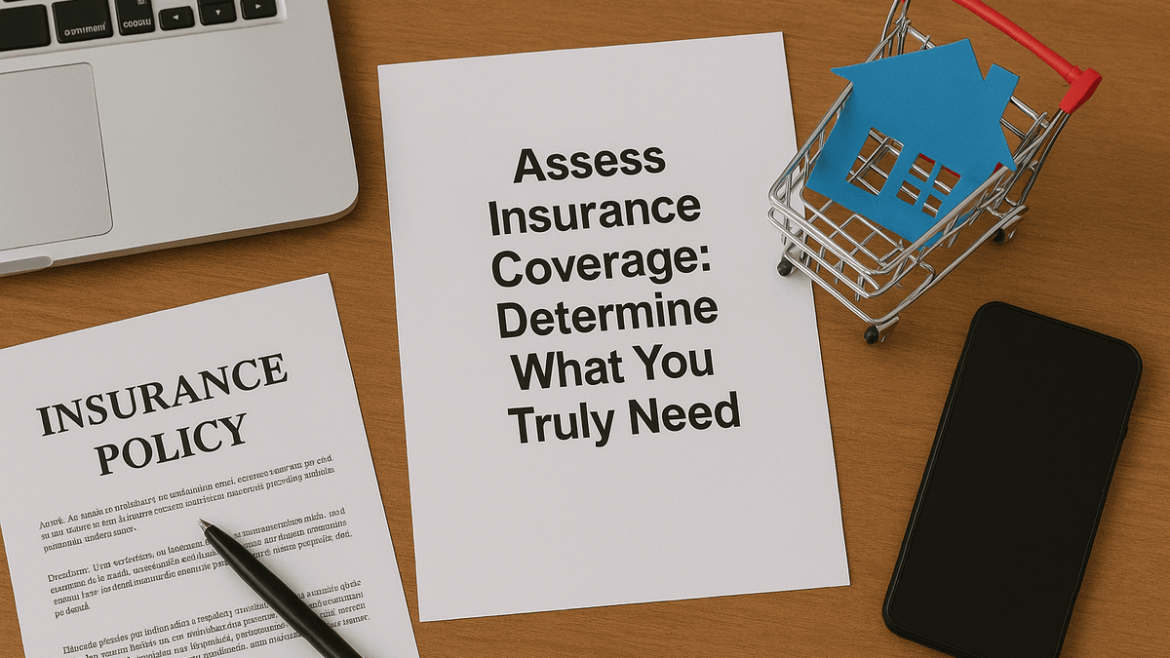Determining if your insurance coverage is adequate is crucial for managing risks and ensuring financial stability. This guide will help you assess insurance coverage for a martial arts school, covering key aspects such as identifying coverage gaps, understanding policy documents, and regular reviews. Start here to make sure your school is well-protected.
Key Takeaways
- Regular evaluation of insurance coverage is essential for martial arts schools to manage financial risks and protect against liabilities.
- Key insurance types include liability insurance, medical coverage, and optional protections, which are crucial for safeguarding against incidents and injuries.
- Understanding policy details and regularly reviewing them helps identify coverage gaps, ensuring that insurance remains adequate as school operations evolve.
Importance of Assessing Insurance Coverage for Martial Arts Schools
Martial arts schools must frequently evaluate their insurance coverage to manage financial risks and protect against potential liabilities. Physical contact and the risk of injuries are inherent in martial arts training, making the right insurance essential to mitigate these risks. Without proper insurance, a martial arts school may face significant financial losses due to lawsuits or property damage.
Insurance for martial arts schools extends beyond injury coverage. It also protects against property damage and business interruptions, offering a financial safety net that allows the school to recover from unforeseen events. Investigating and choosing specialized business insurance tailored to martial arts disciplines can significantly lower legal and financial risks, ensuring that all aspects of the school’s operations are adequately covered.
Regularly examining and adjusting insurance coverage ensures it remains adequate amidst changing circumstances or emerging risks. Over-insurance and under-insurance are common issues that can hinder the accurate evaluation of coverage adequacy. Regular reviews ensure that coverage remains sufficient and aligns with the evolving needs of the school.
Having the right insurance enhances the credibility of a martial arts studio, reflecting a helpful commitment to the safety and health of both students and staff, including their mental health. This credibility can attract more students and foster a sense of trust and security within the martial arts community.
Key Types of Insurance for Martial Arts Schools
Liability insurance serves as a cornerstone for martial arts schools, safeguarding against liability claims related to the school’s operations. This type of insurance is crucial for covering incidents such as bodily injury, property damage, and personal injury caused by students or instructors. Whether it’s a karate class or a taekwondo session, having liability coverage ensures that the school is protected against potential legal and financial repercussions.
Medical and accident coverage is also highly recommended alongside liability insurance. These insurance policies can cover medical expenses for injuries sustained during training, providing an essential safety net for both students and instructors. Additionally, personal injury coverage and options for additional protections, such as equipment coverage, are also available.
Martial arts insurance policies often include optional coverages for specific needs. For instance, some insurers offer defense reimbursement for abuse and molestation claims, providing an extra layer of protection. Schools that engage in high-risk activities, like mixed martial arts, might face higher insurance premiums, but the comprehensive coverage they receive is invaluable.
Evaluating Current Insurance Policies
The initial step in ensuring adequate protection for martial arts schools is evaluating current insurance policies. This process involves a thorough review of existing policies to determine whether they provide sufficient coverage for the school’s specific needs and risks.
Regular assessments help keep coverage updated and allow for necessary adjustments reflecting changes in operations or emerging risks. This proactive approach helps prevent gaps in protection and ensures that the school’s insurance policies remain adequate and effective in safeguarding its interests. It is essential to assess these factors regularly.
Understanding Policy Documents
Grasping the details of insurance policy documents is vital for ensuring comprehensive coverage. Thoroughly reviewing these documents allows martial arts schools to learn specific coverage limitations and confirm that all activities associated with the school are adequately protected on this research form figure page.
A comprehensive understanding of the policy can reveal gaps or potential areas of under-insurance that could expose the school to risks. This idea of understanding helps schools better protect their operations and mitigate potential liabilities, ensuring that their insurance policy aligns with their specific needs and risks.
Identifying Coverage Gaps
Spotting coverage gaps is a crucial aspect of the insurance assessment process, as it has been reported that common gaps can arise from limitations in policy inclusions, leading to under-insurance or a lack of awareness of exclusions.
Creating a checklist of essential coverages specific to martial arts can help schools identify any gaps in their current insurance policies and ensure they are fully protected against potential liabilities. Regularly reviewing policies and consulting with insurance experts can provide tailored solutions to check any recognized gaps.
Regular Policy Reviews
Regular policy reviews keep martial arts schools updated on coverage and allow adjustments to new risks or operational changes. Implementing regular reviews helps prevent gaps in protection and ensures that the insurance coverage remains adequate as the business evolves.
Adjusting to changing circumstances and evolving operations is key to maintaining adequate coverage in emergencies. Regular assessments and tests allow martial arts schools to stay proactive in their risk management program and ensure continuous protection in a series of situations.
Additional Coverage Options
Martial arts schools have access to various additional coverage options that can enhance their protection. Tournament insurance, for example, provides coverage for events organized by the school, including those involving participants who are not regular members. Injuries sustained during competitions and tournaments are generally not covered under standard policies, making this additional sport coverage essential.
Medical expense pay for participants and coverage for non-registered member activities are specific coverages offered by many martial arts insurance programs. Contents coverage is another valuable option, protecting valuable equipment and possessions against loss or damage while participating, ensuring that you can care for your assets.
Assessing the need for additional coverage options, like directors and officers insurance, can shield against specific liabilities. Schools must consider these optional coverages to ensure comprehensive protection for all aspects of their operations.
Factors Affecting Insurance Needs
Several factors influence the insurance needs of martial arts schools. Insurance expenses can vary significantly, often ranging between $850 and $5,000 annually, depending on factors such as the school’s size and location. Urban areas, for example, usually face different premiums compared to rural settings.
Birthday party coverage is another consideration, offering liability protection for events held at the school. This optional insurance enhancement can provide additional peace of mind considerations for schools hosting such events.
Risk factors, such as thrill-seeking behavior and the dangerous nature of some martial arts activities, heavily impact insurance needs and premiums. The number of students and the type of martial arts practiced also significantly influence the insurance requirements.
Choosing the Right Insurance Provider

Choosing the right insurance providers is essential for important support protection. Choosing an insurer with a solid financial foundation is essential to ensure they can meet claims obligations without compromising customer service.
Keeping track of the insurer’s reputation and industry changes ensures high-quality services for individuals. A company known for customizable policies has achieved the ability to allow clients to tailor coverage to their specific needs, enhancing overall satisfaction along the line.
Benefits of Adequate Coverage
Adequate insurance coverage offers peace of mind, allowing martial arts schools to operate without fear of unexpected financial burdens. Having sufficient coverage protects against significant financial burdens resulting from legal claims or accidents, ensuring the school remains financially stable.
Meeting legal insurance requirements prevents potential penalties and supports business continuity. Overall, adequate coverage benefits martial arts schools by providing peace of mind, financial security, and ensuring compliance with legal standards.
Steps to Take After Assessing Your Coverage
Post-assessment, martial arts schools should update their policies to reflect operational changes or new risk exposures. Consulting with an insurance advisor can help identify any additional coverage needed and provide tailored recommendations based on the school’s unique needs.
Documenting any changes in operations or enrollment numbers is crucial for promoting accurate insurance coverage and involvement. This proactive approach ensures that the school’s insurance policies remain adequate and effective ien safeguarding its interests and may even help to decrease potential risks.
Summary
Summarizing the key points, assessing insurance coverage for martial arts schools is essential for managing financial risks and ensuring comprehensive protection. Key types of insurance include liability, medical, and accident coverage, with additional options available for tournaments and valuable possessions. Regular evaluations and understanding policy documents are crucial for identifying coverage gaps and maintaining adequate protection.
In conclusion, having adequate insurance coverage provides peace of mind, financial stability, and compliance with legal standards. By following the steps outlined in this guide, martial arts schools can ensure they are well-protected and prepared for any unforeseen events.
Frequently Asked Questions
What additional coverage options are available with their insurance?
Additional coverage options include contents coverage for valuable possessions and tournament coverage for in-house tournaments. These options enhance protection for specific needs.
Why is it important for a martial arts school to have insurance?
It is crucial for a martial arts school to have insurance to protect against potential financial losses from lawsuits or property damage. This coverage provides essential security for the school’s operations and assets.
What types of coverage do they recommend for martial arts schools?
It is advisable for martial arts schools to secure liability, medical, and accident coverage to ensure comprehensive protection. These types of coverage address potential risks associated with training and events.
What is the significance of reviewing policy documents when choosing martial arts insurance?
Reviewing policy documents is crucial to ensure that the insurance coverage adequately addresses the specific needs and risks associated with the martial arts activities offered, thereby safeguarding against potential liabilities.
What types of incidents can martial arts insurance cover?
Martial arts insurance typically covers incidents related to bodily injury, property damage, and personal injury caused by either students or instructors. This ensures comprehensive protection for martial arts schools and practitioners.

